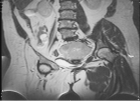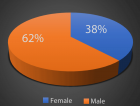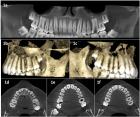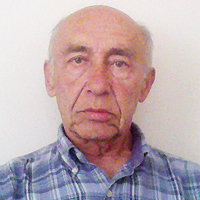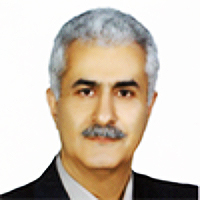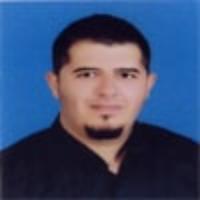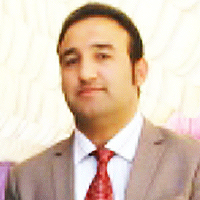Abstract
Research Article
Management of Non-contact Injuries, Nonspecific Chronic Pain, and Prevention via Sensory Conflicts Detection: Vertical Heterophoria as a Landmark Indicator
Eric Matheron*
Published: 25 March, 2024 | Volume 8 - Issue 1 | Pages: 005-013
Sensory and sensorimotor conflicts can lead to sensory and motor efficiency disturbances, such as pain and less efficient motor control. Vertical heterophoria (VH) and vertical orthophoria (VO) are respectively the latent vertical misalignment of the eyes when the retinal images are dissociated, or not. Mild VH (< 0.57°) could indicate the presence of a conflict resulting from eye refraction problems and/or a disruption of the somaesthetic cues. Canceling the conflict(s) can immediately restore VO, making it possible to observe an improvement in the mobility of spinal and peripheral joints, the performance in the motor and balance tests after initial alternation, and a decrease in pain. The Maddox Rod Test was used to detect mild VH but doesn’t determine the sensory conflict origin. The aim of this retrospective study is to show its use as a landmark in which sensory afferent conflict could induce symptoms (i.e. pain; decreased range of motion; nonoptimal postural and motor control) and how to manage it, analyzing data from 525 subjects. The clinical process is intended to inhibit or neutralize afferent signals involved in the sensorimotor loops required by the central nervous system in motor control in order to spot the locus of conflict (stomatognathic system, pelvis, plantar afferences, piercings (body art) or/and eye refraction problems). This investigation protocol based on VH detection provides trackers for the therapeutic intervention in the management of nonspecific chronic pain, non-contact injuries, and prevention, and a key role for practitioners in the multidisciplinary management required for patients/athletes, in the world of work/health.
Read Full Article HTML DOI: 10.29328/journal.jnpr.1001057 Cite this Article Read Full Article PDF
References
- Waddell G. 1987 Volvo award in clinical sciences. A new clinical model for the treatment of low-back pain. Spine (Phila Pa 1976). 1987 Sep;12(7):632-44. doi: 10.1097/00007632-198709000-00002. PMID: 2961080.
- Hancock MJ, Maher CG, Laslett M, Hay E, Koes B. Discussion paper: what happened to the ‘bio’ in the bio-psycho-social model of low back pain? Eur Spine J. 2011 Dec;20(12):2105-10. doi: 10.1007/s00586-011-1886-3. Epub 2011 Jun 25. PMID: 21706216; PMCID: PMC3229745.
- Harris AJ. Cortical origin of pathological pain. Lancet. 1999 Oct 23;354(9188):1464-6. doi: 10.1016/S0140-6736(99)05003-5. PMID: 10543687.
- McCabe CS, Haigh RC, Halligan PW, Blake DR. Simulating sensory-motor incongruence in healthy volunteers: implications for a cortical model of pain. Rheumatology (Oxford). 2005 Apr;44(4):509-16. doi: 10.1093/rheumatology/keh529. Epub 2005 Jan 11. PMID: 15644392.
- McCabe CS, Cohen H, Blake DR. Somaesthetic disturbances in fibromyalgia are exaggerated by sensory motor conflict: implications for chronicity of the disease? Rheumatology (Oxford). 2007 Oct;46(10):1587-92. doi: 10.1093/rheumatology/kem204. Epub 2007 Sep 1. PMID: 17767000.
- Matheron E, Kapoula Z. Vertical heterophoria and postural control in nonspecific chronic low back pain. PLoS One. 2011 Mar 30;6(3):e18110. doi: 10.1371/journal.pone.0018110. PMID: 21479210; PMCID: PMC 3068140.
- Matheron E, Kapoula Z. Face Piercing (Body Art): Choosing Pleasure vs. Possible Pain and Posture Instability. Front Physiol. 2011 Sep 21;2:64. doi: 10.3389/fphys.2011.00064. PMID: 21960975; PMCID: PMC3177080.
- Matheron E, Kapoula Z. Incidence of vertical phoria on postural control during binocular vision: what perspective for prevention to nonspecific chronic pain management? Med Hypothesis Discov Innov Ophthalmol. 2015 Spring;4(1):27-30. PMID: 25861672; PMCID: PMC4389295.
- Nashner LM. Adapting reflexes controlling the human posture. Exp Brain Res. 1986; 26: 59-72.
- Roll JP, Vedel JP, Roll R. Eye, head and skeletal muscle spindle feedback in the elaboration of body references. Prog Brain Res. 1989;80:113-23; discussion 57-60. doi: 10.1016/s0079-6123(08)62204-9. PMID: 2634269.
- Amos FJ, Rutstein R. Vertical deviation. In F.J. Amos (Ed), Diagnosis and management in vision care. 1987; 515-583. Amsterdam, New-York, Oxford: Butterworths.
- Matheron E, Quercia P, Weber B, Gagey PM. Vertical heterophoria and postural deficiency syndrome. Gait Posture. 2005a; 21(suppl 1):132-133.
- Matheron E, Barlaud P, D’Athis P. [Evaluation of vertical heterophoria in distance vision in so-called chronic arthralgic and/or spinal pain subjects, and incidence of their normalization by specific proprioceptive physiotherapy]. In M. Lacour, & B. Weber (Eds). [Bipedalism, postural control and cortical representation]. Marseille, Solal. 2005b; 213-220.
- Scheiman M, Wick B. Clinical management of binocular vision, heterophoric, accommodative and eye movement disorders. Philadelphia, Lippincott. 1994.
- Matheron E. [Vertical heterophoria and myotonic normalisation]. Kinésithér Scient. 2000; 34: 23-28.
- Garrigues B. [Visual spatial localization abnormalities in dyslexic children. Preliminary study]. In B. Weber, & P. Villeneuve (Eds). [Clinical posturology: motor and cognitive dysfunctions]. Paris, Elsevier Masson. 2007; 70-75.
- Treede RD, Rief W, Barke A, Aziz Q, Bennett MI, Benoliel R, Cohen M, Evers S, Finnerup NB, First MB, Giamberardino MA, Kaasa S, Korwisi B, Kosek E, Lavand’homme P, Nicholas M, Perrot S, Scholz J, Schug S, Smith BH, Svensson P, Vlaeyen JWS, Wang SJ. Chronic pain as a symptom or a disease: the IASP Classification of Chronic Pain for the International Classification of Diseases (ICD-11). Pain. 2019 Jan;160(1):19-27. doi: 10.1097/j.pain.0000000000001384. PMID: 30586067.
- Matheron E, Kapoula Z. Vertical phoria and postural control in upright stance in healthy young subjects. Clin Neurophysiol. 2008 Oct;119(10):2314-20. doi: 10.1016/j.clinph.2008.06.016. Epub 2008 Aug 28. PMID: 18760665.
- Matheron E, Zandi A, Wang D, Kapoula Z. A 1-Diopter Vertical Prism Induces a Decrease of Head Rotation: A Pilot Investigation. Front Neurol. 2016 Apr 28;7:62. doi: 10.3389/fneur.2016.00062. PMID: 27199886; PMCID: PMC4848294.
- Daum KM. Heterophoria and heterotropia. In J.B. Eskridge, F.J. Amos, & J.D. Barlett (Eds). Clinical procedures in optometry. Philadelphia, J.B. Lippincott Compagny. 1991; 72-90.
- Wong AM, Tweed D, Sharpe JA. Vertical misalignment in unilateral sixth nerve palsy. Ophthalmology. 2002 Jul;109(7):1315-25. doi: 10.1016/s0161-6420(02)01067-9. PMID: 12093657.
- Casillas Casillas E, Rosenfield M. Comparison of subjective heterophoria testing with a phoropter and trial frame. Optom Vis Sci. 2006 Apr;83(4):237-41. doi: 10.1097/01.opx.0000214316.50270.24. PMID: 16614580.
- Matheron E, Yang Q, Lê TT, Kapoula Z. Effects of ocular dominance on the vertical vergence induced by a 2-diopter vertical prism during standing. Neurosci Lett. 2008 Oct 24;444(2):176-80. doi: 10.1016/j.neulet.2008.08.025. Epub 2008 Aug 14. PMID: 18718507.
- Schor CM, McCandless JW. An adaptable association between vertical and horizontal vergence. Vision Res. 1995 Dec;35(23-24):3519-27. doi: 10.1016/0042-6989(95)00063-k. PMID: 8560816.
- Von Noorden GK, Campos EC. Binocular vision and ocular motility: theory and management of strabismus. 6th ed. St.Louis, Mosby. 2002.
- Matheron E. [Incidence of vertical phoria on postural control during binocular vision]. Doctoral dissertation, University of Paris V – René Descartes. Paris, France. 2009.
- Ungerleider LG, Mishkin M. Two cortical visual systems. In D.J. Ingle, M.A. Goodale, & Mansfield, R.J.W. (Eds) Analysis of visual behaviour. Cambridge, MA, MIT Press. 1982; 549-586
- Goodale MA, Milner AD. Separate visual pathways for perception and action. Trends Neurosci. 1992 Jan;15(1):20-5. doi: 10.1016/0166-2236(92)90344-8. PMID: 1374953.
- Amblard B, Crémieux J, Marchand AR, Carblanc A. Lateral orientation and stabilization of human stance: static versus dynamic visual cues. Exp Brain Res. 1985;61(1):21-37. doi: 10.1007/BF00235617. PMID: 4085597.
- Quercia P, Quercia M, Feiss LJ, Allaert F. The distinctive vertical heterophoria of dyslexics. Clin Ophthalmol. 2015 Sep 25;9:1785-97. doi: 10.2147/OPTH.S88497. PMID: 26445526; PMCID: PMC4590632.
- Rosner MS, Feinberg DL, Doble JE, Rosner AJ. Treatment of vertical heterophoria ameliorates persistent post-concussive symptoms: A retrospective analysis utilizing a multi-faceted assessment battery. Brain Inj. 2016;30(3):311-7. doi: 10.3109/02699052.2015.1113564. Epub 2016 Feb 1. PMID: 26829465.
- Niboyet JEH. [Practice of manual medicine]. Paris, Maisonneuve publisher. 1968.
- Clauzade MA, Darraillans B. [Osteopathic concept of occlusion]. Perpignan, SEOO publisher. 1989.
- Meersseman JP, Esposito GM. [Evaluation of the relationship between occlusion and posture]. Modern Dentist. 1988; 6: 5-69.
- Bourdiol RJ. [Reflex cephalic neurotherapy]. Moulins-lès-Metz, Maisonneuve ed. 1987.
- Bourdiol RJ, Bortolin G. [Headache HemicraniE – New nosological classification and multidisciplinary therapeutic approach]. Treviso, Gemmer Italia, Edizioni, Guia, Valdobbiadene. 2000.
- Bonnier L. Eighth lesson. In PM Gagey, G Bizzo, L Bonnier, R Gentaz, P Guillaume, C Marucchi, P Villeneuve (Eds), [Eight lessons]. 4th ed. Paris, French Association of Posturology. 1993.
- Bles W, De Wit G. Study of the effects of optic stimuli on standing. Agressologie. 1976;17(C Spec No):1-5. PMID: 1008135.
- Dujols A. [The plantar quotiens and visual-podal conflict]. Agressologie. 1996; 32: 192–194.
- Lepork AM, Villeneuve P. [Irritating plantar support thorns: clinical and stabilometric observations]. In P. Villeneuve (Ed). [Foot, Balance and Posture]. Paris, Frison-Roche. 1986; 131-38.
- Yi Y, Park S. Effect of reduced cutaneous cues on motion perception and postural control. Exp Brain Res. 2009 May;195(3):361-9. doi: 10.1007/s00221-009-1796-3. Epub 2009 Apr 29. PMID: 19404630.
- Janin M. [The plantar sensitivity and plantar motility: their influence on posturo-kinetics control activities in healthy and pathological subjects]. Doctoral dissertation, Unive University of Toulouse III – Paul Sabatier. Toulouse, France. 2009.
- Foisy A. [The role of plantar cutaneous afferents in postural and oculomotor control in healthy subjects and in subjects with a nonsymptomatic plantar exteroceptive inefficiency]. Doctoral dissertation, University of Paris V – René Descartes, Paris, France. 2016.
- Foisy A, Kapoula Z. How Plantar Exteroceptive Efficiency Modulates Postural and Oculomotor Control: Inter-Individual Variability. Front Hum Neurosci. 2016 May 13;10:228. doi: 10.3389/fnhum.2016.00228. PMID: 27242490; PMCID: PMC4866577.
- Bourdiol RJ. [Podo-reflexo-kinesiology]. Moulins-lès-Metz, Maisonneuve ed. 1986.
- Matheron E, Weber B. [Involvement of visual input in tonic postural asymmetries: clinical approach]. In D. Perennou, & M. Lacour (Eds). [Efficiency and deficiencies of postural control]. Marseille, Solal. 2006; 261-270.
- Ivanenko Y, Grasso RF, Lacquaniti. Effect of gaze on postural responses to neck proprioceptive and vestibular stimulation in humans. Journal of Physiology. 1999; 519(1): 301-314.
- Roll JP, Roll R. From eye to foot: a proprioceptive chain involded in postural control. In B. Amblard, A. Berthoz, & F. Clarac (Eds). Posture and Gait: Development, Adaptation, and Modulation. Amsterdam, Elseiver. 1988; 155-164.
- Berthoz A. The role of gaze in compensation of vestibular disfunction: the gaze substitution hypothesis. Prog Brain Res. 1988;76:411-20. doi: 10.1016/s0079-6123(08)64528-8. PMID: 3064159.
- Matheron E, Mourey F, Weber B. [Vertical heterophoria can be modified by vibration of the masseter and temporalis tendons]. In M. Lacour (Ed). [New posturographic signal processing methods]. Solal, Marseille. 2004; 145-152
- Janin M, Dupui P. The effects of unilateral medial arch support stimulation on plantar pressure and center of pressure adjustment in young gymnasts. Neurosci Lett. 2009 Sep 25;461(3):245-8. doi: 10.1016/j.neulet.2009.06.043. Epub 2009 Jun 21. PMID: 19545613.
- Bonaventura RE, Giustino V, Chiaramonte G, Giustiniani A, Smirni D, Battaglia G, Messina G, Oliveri M. Investigating prismatic adaptation effects in handgrip strength and in plantar pressure in healthy subjects. Gait Posture. 2020 Feb;76:264-269. doi: 10.1016/j.gaitpost.2019.12.022. Epub 2019 Dec 23. PMID: 31881480.
- Gagey PM, Baron JB, Lespargot J, Poli JP. [Variations of postural tonic activity and the activity of oculocephalogyric muscles in cathedrostatism]. Agressologie. 1973;14 Spec B(0):87-95. French. PMID: 4802358.
- Gagey PM. [The law of the canals]. Agressologie. 1988 Oct;29(10):691-2. French. PMID: 3247894.
- Da Cunha HM, Da Silva OA. [Postural deficiency syndrome. Its importance in ophthalmology]. J Fr Ophtalmol. 1986;9(11):747-55. French. PMID: 3571839.
- Leetun DT, Ireland ML, Willson JD, Ballantyne BT, Davis IM. Core stability measures as risk factors for lower extremity injury in athletes. Med Sci Sports Exerc. 2004 Jun;36(6):926-34. doi: 10.1249/01.mss.0000128145.75199.c3. PMID: 15179160.
- Mok NW, Brauer SG, Hodges PW. Hip strategy for balance control in quiet standing is reduced in people with low back pain. Spine (Phila Pa 1976). 2004 Mar 15;29(6):E107-12. doi: 10.1097/01.brs.0000115134.97854.c9. PMID: 15014284.
- Dros J, Maarsingh OR, Beem L, van der Horst HE, ter Riet G, Schellevis FG, van Weert HC. Impact of dizziness on everyday life in older primary care patients: a cross-sectional study. Health Qual Life Outcomes. 2011 Jun 16;9:44. doi: 10.1186/1477-7525-9-44. PMID: 21679451; PMCID: PMC3142198.
- Kapoula Z, Yang Q, Lê TT, Vernet M, Berbey N, Orssaud C, Londero A, Bonfils P. Medio-lateral postural instability in subjects with tinnitus. Front Neurol. 2011 May 27;2:35. doi: 10.3389/fneur.2011.00035. PMID: 21647364; PMCID: PMC3103995.
- De Blaiser C, Roosen P, Willems T, Danneels L, Bossche LV, De Ridder R. Is core stability a risk factor for lower extremity injuries in an athletic population? A systematic review. Phys Ther Sport. 2018 Mar;30:48-56. doi: 10.1016/j.ptsp.2017.08.076. Epub 2017 Aug 24. PMID: 29246794.
- Scholes M, Stadler S, Connell D, Barton C, Clarke RA, Bryant AL, Malliaras P. Men with unilateral Achilles tendinopathy have impaired balance on the symptomatic side. J Sci Med Sport. 2018 May;21(5):479-482. doi: 10.1016/j.jsams.2017.09.594. Epub 2017 Oct 6. PMID: 29054749.
- Carvalho GF, Schwarz A, Szikszay TM, Adamczyk WM, Bevilaqua-Grossi D, Luedtke K. Physical therapy and migraine: musculoskeletal and balance dysfunctions and their relevance for clinical practice. Braz J Phys Ther. 2020 Jul-Aug;24(4):306-317. doi: 10.1016/j.bjpt.2019.11.001. Epub 2019 Nov 29. PMID: 31813696; PMCID: PMC7351966.
- Baron JB, Goumot H, Gagey PM, Filliozat R, Gentaz R, Koitcheva V, Rouquet Y, Fouque A, Bessineton JC, Pacifici M, Ushio N. [Disturbance of tonic postural activity of oculomotor origins due to head injury. Neuro-ophthalmological and pharmacological aspects]. Agressologie. 1975;16 Spec No D:53-64. French. PMID: 1085575.
- Von Korff M, Crane P, Lane M, Miglioretti DL, Simon G, Saunders K, Stang P, Brandenburg N, Kessler R. Chronic spinal pain and physical-mental comorbidity in the United States: results from the national comorbidity survey replication. Pain. 2005 Feb;113(3):331-339. doi: 10.1016/j.pain.2004.11.010. PMID: 15661441.
- Doble JE, Feinberg DL, Rosner MS, Rosner AJ. Identification of binocular vision dysfunction (vertical heterophoria) in traumatic brain injury patients and effects of individualized prismatic spectacle lenses in the treatment of postconcussive symptoms: a retrospective analysis. PM R. 2010 Apr;2(4):244-53. doi: 10.1016/j.pmrj.2010.01.011. PMID: 20430325.
- Wiesinger B, Malker H, Englund E, Wänman A. Back pain in relation to musculoskeletal disorders in the jaw-face: a matched case-control study. Pain. 2007 Oct;131(3):311-319. doi: 10.1016/j.pain.2007.03.018. Epub 2007 Apr 24. PMID: 17459585.
- Guillaume P. [The clinical postural examination]. Agressologie. 1988; 29(10): 687-690.
- Gagey PM, Weber B. [Posturology: Regulation and standing disturbances]. 3ed, Masson. 2004.
- Alexandre M, Anne-Marie B, Valérie J, Yves B, Patrick Q. Are changes in the stomatognatic system able to modify the eye balance in dyslexia? J Oral Biol Craniofac Res. 2019 Apr-Jun;9(2):166-171. doi: 10.1016/j.jobcr.2019.03.005. Epub 2019 Mar 24. PMID: 30976507; PMCID: PMC 6439284.
- Gagey PM, Baron JB, Ushio N. [Introduction to clinical posturology]. Agressologie. 1980;21(E):119-23. French. PMID: 7246889.
- Gagey PM, Asselain B, Ushio N, Baron JB. [Asymmetries of orthostatic posture: are they due to chance?]. Agressologie. 1977;18(5):277-83. French. PMID: 602990.
- Gentaz R, Asselain B, Lévy J, Gagey PM. [Electromyographic approach to orthostatic posture asymmetries]. Agressologie. 1979; 20(B): 113-114.
- Paxton JZ, Grover LM, Baar K. Engineering an in vitro model of a functional ligament from bone to bone. Tissue Eng Part A. 2010 Nov;16(11):3515-25. doi: 10.1089/ten.TEA.2010.0039. Epub 2010 Aug 28. PMID: 20593972.
- Paxton JZ, Hagerty P, Andrick JJ, Baar K. Optimizing an intermittent stretch paradigm using ERK1/2 phosphorylation results in increased collagen synthesis in engineered ligaments. Tissue Eng Part A. 2012 Feb;18(3-4):277-84. doi: 10.1089/ten.TEA.2011.0336. Epub 2011 Dec 22. PMID: 21902469; PMCID: PMC3267962.
- Quercia P, Seigneuric A, Chariot S, Vernet P, Pozzo T, Bron A, Creuzot-Garcher C, Robichon F. [Ocular proprioception and developmental dyslexia. Sixty clinical observations]. J Fr Ophtalmol. 2005 Sep;28(7):713-23. French. doi: 10.1016/s0181-5512(05)80983-0. PMID: 16208221.
- Matheron E. [Maddox Rod Test (vertical streaks) and postural deficiency syndrome]. In B Weber, P Villeneuve (Eds) [Clinical posturology: motor and cognitive dysfunctions]. Elsevier Masson, Paris. 2007; 44-51.
- Jackson DN, Bedell HE. [Vertical heterophoria and susceptibility to visually induced motion sickness]. Clinical posturology: motor and cognitive dysfunctions] Strabismus. 2012 Mar;20(1):17-23. doi: 10.3109/09273972.2011.650813. PMID: 22390327; PMCID: PMC 3625960.
- Albert H, Godskesen M, Westergaard J. Evaluation of clinical tests used in classification procedures in pregnancy-related pelvic joint pain. Eur Spine J. 2000 Apr;9(2):161-6. doi: 10.1007/s005860050228. PMID: 10823434; PMCID: PMC3611366.
- Hansen A, Jensen DV, Larsen EC, Wilken-Jensen C, Kaae BE, Frølich S, Thomsen HS, Hansen TM. Postpartum pelvic pain--the “pelvic joint syndrome”: a follow-up study with special reference to diagnostic methods. Acta Obstet Gynecol Scand. 2005 Feb;84(2):170-6. doi: 10.1111/j.0001-6349.2005.00687.x. PMID: 15683379.
- Gagey PM. A critique of posturology: towards an alternative neuro-anatomy? Surg Radiol Anat. 1991;13(4):255-7. doi: 10.1007/BF01627752. PMID: 1803533.
Figures:
Similar Articles
-
Postural Stability Induced by Supervised Physical Training may improve also Oxygen Cost of Exercise and Walking Capacity in Post-Menopause, Obese WomenFernanda Velluzzi,Massimiliano Pau,Andrea Loviselli,Raffaele Milia,Daniela Lai,Daniele Concu,Gianmarco Angius,Abdallah Raweh,Andrea Fois,Alberto Concu*. Postural Stability Induced by Supervised Physical Training may improve also Oxygen Cost of Exercise and Walking Capacity in Post-Menopause, Obese Women. . 2017 doi: 10.29328/journal.jnpr.1001001; 1: 001-011
-
Effects of Fast-Walking on Muscle Activation in Young Adults and Elderly PersonsCamila Fonseca de Oliveira*,Denise Paschoal Soares,Michel Christian Bertani,Leandro José Rodrigues Machado,João Paulo Vila-Boas. Effects of Fast-Walking on Muscle Activation in Young Adults and Elderly Persons. . 2017 doi: 10.29328/journal.jnpr.1001002; 1: 012-019
-
Pulsed Shortwave Diathermy and Joint Mobilizations Restore a Twice Fractured Elbow with Metal Implants to Full Range of MotionDavid O. Draper*,Emily Veazey. Pulsed Shortwave Diathermy and Joint Mobilizations Restore a Twice Fractured Elbow with Metal Implants to Full Range of Motion. . 2017 doi: 10.29328/journal.jnpr.1001003; 1: 020-026
-
Comparison of two types of strengthening exercises in upper limbs for improvement of wheelchair propulsion in paraplegicsAkanksha Satyavanshi,Monalisa Pattnaik,Patitapaban Mohanty*. Comparison of two types of strengthening exercises in upper limbs for improvement of wheelchair propulsion in paraplegics. . 2017 doi: 10.29328/journal.jnpr.1001004; 1: 027-033
-
Foot Arch Differences in Elderly People at Standing: Considering Gender and AgeMichel Bertani,Denise Soares,Everton Rocha,Leandro Machado. Foot Arch Differences in Elderly People at Standing: Considering Gender and Age. . 2017 doi: 10.29328/journal.jnpr.1001005; 1: 034-038
-
Achilles Tendon Injuries: Comparison of Different Conservative and Surgical Treatment and RehabilitationAlessandro Bistolfi,Jessica Zanovello, Elisa Lioce,Lorenzo Morino,Raul Cerlon,Alessandro Aprato*,Giuseppe Massazza. Achilles Tendon Injuries: Comparison of Different Conservative and Surgical Treatment and Rehabilitation. . 2017 doi: 10.29328/journal.jnpr.1001006; 1: 039-053
-
How does a Personalized Rehabilitative Model influence the Functional Response of Different Ankle Foot Orthoses in a Cohort of Patients Affected by Neurological Gait Pattern?Maurizio Falso*, Eleonora Cattaneo,Elisa Foglia,Marco Zucchini,Franco Zucchini. How does a Personalized Rehabilitative Model influence the Functional Response of Different Ankle Foot Orthoses in a Cohort of Patients Affected by Neurological Gait Pattern?. . 2017 doi: 10.29328/journal.jnpr.1001010; 1: 072-092
-
First Metatarsal Stress Fracture of a pre-adolescent female Irish dancer with Medial Plantar Foot Pain: A Case ReportDale Gerke,Jean-Michel Brismée*. First Metatarsal Stress Fracture of a pre-adolescent female Irish dancer with Medial Plantar Foot Pain: A Case Report. . 2017 doi: 10.29328/journal.jnpr.1001009; 1: 067-071
-
Factors affecting muscle strength in cancer patients receiving chemotherapyJiro Nakano*,Shun Ishii,Takuya Fukushima,Ayumi Natsuzako,Junya Sakamoto,Minoru Okita. Factors affecting muscle strength in cancer patients receiving chemotherapy. . 2017 doi: 10.29328/journal.jnpr.1001008; 1: 056-066
-
The effects of EMF (ELECTROMAGNETIC FIELDS) on the Bone and Cartilage TissueCemil Sert*. The effects of EMF (ELECTROMAGNETIC FIELDS) on the Bone and Cartilage Tissue. . 2017 doi: 10.29328/journal.jnpr.1001007; 1: 054-055
Recently Viewed
-
Association between clinical forms of Leprosy and contacts with the vaccination state with BCG in five endemic municipalities in the Brazilian AmazonMaria do Perpétuo Socorro Amador Silvestre*,Maxwell Furtado de Lima,E Luana Nepomuceno Gondim Costa Lima. Association between clinical forms of Leprosy and contacts with the vaccination state with BCG in five endemic municipalities in the Brazilian Amazon. Int J Clin Microbiol Biochem Technol. 2022: doi: 10.29328/journal.ijcmbt.1001024; 5: 001-004
-
Biopesticides use on cotton and their harmful effects on human health & environmentPranay Raja Bhad*. Biopesticides use on cotton and their harmful effects on human health & environment. Int J Clin Microbiol Biochem Technol. 2022: doi: 10.29328/journal.ijcmbt.1001025; 5: 005-008
-
Why Down-managing Backlog Forensic DNA Case Entries MattersJH Smith*, JS Horne. Why Down-managing Backlog Forensic DNA Case Entries Matters. J Forensic Sci Res. 2024: doi: 10.29328/journal.jfsr.1001056; 8: 001-008
-
Environmental Factors Affecting the Concentration of DNA in Blood and Saliva Stains: A ReviewDivya Khorwal*, GK Mathur, Umema Ahmed, SS Daga. Environmental Factors Affecting the Concentration of DNA in Blood and Saliva Stains: A Review. J Forensic Sci Res. 2024: doi: 10.29328/journal.jfsr.1001057; 8: 009-015
-
What to do from the Emergency Room in Case of Suspected Chemical SubmissionSuárez D*, Pascual E, Valdes R, Diego C, Munera R. What to do from the Emergency Room in Case of Suspected Chemical Submission. J Forensic Sci Res. 2024: doi: 10.29328/journal.jfsr.1001058; 8: 016-018
Most Viewed
-
Evaluation of Biostimulants Based on Recovered Protein Hydrolysates from Animal By-products as Plant Growth EnhancersH Pérez-Aguilar*, M Lacruz-Asaro, F Arán-Ais. Evaluation of Biostimulants Based on Recovered Protein Hydrolysates from Animal By-products as Plant Growth Enhancers. J Plant Sci Phytopathol. 2023 doi: 10.29328/journal.jpsp.1001104; 7: 042-047
-
Sinonasal Myxoma Extending into the Orbit in a 4-Year Old: A Case PresentationJulian A Purrinos*, Ramzi Younis. Sinonasal Myxoma Extending into the Orbit in a 4-Year Old: A Case Presentation. Arch Case Rep. 2024 doi: 10.29328/journal.acr.1001099; 8: 075-077
-
Feasibility study of magnetic sensing for detecting single-neuron action potentialsDenis Tonini,Kai Wu,Renata Saha,Jian-Ping Wang*. Feasibility study of magnetic sensing for detecting single-neuron action potentials. Ann Biomed Sci Eng. 2022 doi: 10.29328/journal.abse.1001018; 6: 019-029
-
Pediatric Dysgerminoma: Unveiling a Rare Ovarian TumorFaten Limaiem*, Khalil Saffar, Ahmed Halouani. Pediatric Dysgerminoma: Unveiling a Rare Ovarian Tumor. Arch Case Rep. 2024 doi: 10.29328/journal.acr.1001087; 8: 010-013
-
Physical activity can change the physiological and psychological circumstances during COVID-19 pandemic: A narrative reviewKhashayar Maroufi*. Physical activity can change the physiological and psychological circumstances during COVID-19 pandemic: A narrative review. J Sports Med Ther. 2021 doi: 10.29328/journal.jsmt.1001051; 6: 001-007

HSPI: We're glad you're here. Please click "create a new Query" if you are a new visitor to our website and need further information from us.
If you are already a member of our network and need to keep track of any developments regarding a question you have already submitted, click "take me to my Query."






